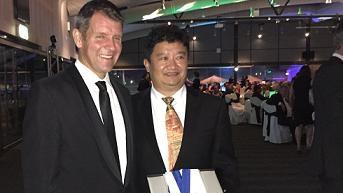A groundbreaking discovery at the Kani Koter cemetery in northwestern Iran has uncovered a unique formula for black eye makeup dating back to the Iron Age. Spearheaded by Dr. Silvia Amicone from the Archaeometry working group at the University of Tübingen, the research team found that the kohl used between the 9th and 7th centuries BCE contained natural graphite and manganese oxide, differing from the lead-based formulas prevalent at that time across the Ancient Near East.
Unveiling the Secrets of Iron Age Cosmetics
The study, published in the journal Archaeometry, delves into the material culture on the fringes of the former Assyrian Empire. “The graves at Kani Koter include early elite burials with rich grave goods,” explained Dr. Shelir Amelirad from Heidelberg University. Among these were personal grooming items such as mirrors and kohl application tools, along with a ceramic vessel containing a black powder. These objects bore elements of Assyrian style, shedding light on the cultural exchanges of the period.
Analysis of the black powder revealed the distinct use of graphite, a mineral known for its skin adherence and metallic sheen. This contrasts with the lead or organic ingredients typically found in kohl from that era. “The absence of organic substances in our samples is intriguing,” noted Amicone. “It’s unclear if they were intentionally omitted or decomposed over time.”
Cultural Insights from a New Formula
The utilization of manganese oxide and natural graphite suggests a creative exploitation of the mineral-rich resources in the Zagros Mountains. This discovery enriches our understanding of personal adornment and elite cultural practices in the ancient world, particularly within the region bridging Assyria and Iran. “We are constantly adding new building blocks to our knowledge of cultural development through modern scientific methods,” stated Professor Dr. Karla Pollmann, president of the University of Tübingen.
The findings highlight the sophistication and ingenuity of ancient personal grooming rituals, offering a window into the past that helps reconstruct the social and cultural dynamics of historical elites. As researchers continue to explore these ancient artifacts, the narrative of historical human development becomes increasingly detailed and vivid.
For further details, see the study by Silvia Amicone et al., “Eye makeup in Northwestern Iran at the time of the Assyrian Empire: a new kohl recipe based on manganese and graphite from Kani Koter (Iron Age III),” published in Archaeometry in 2025.































































